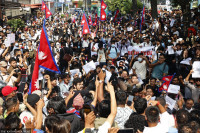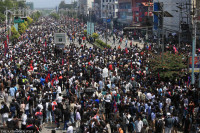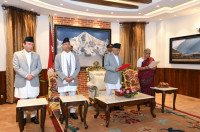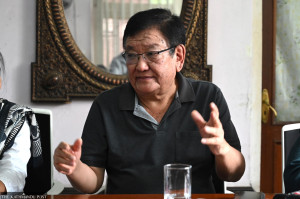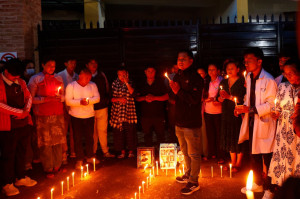Opinion
High hopes for BIMSTEC Summit
The Bay of Bengal Initiative for Multi-Sectorial Technical and Economic Cooperation (BIMSTEC) came into being in June 1997 with the aim of promoting free trade within the region, increasing cross-border investment, tourism and people-to-people contact and boosting technical cooperation.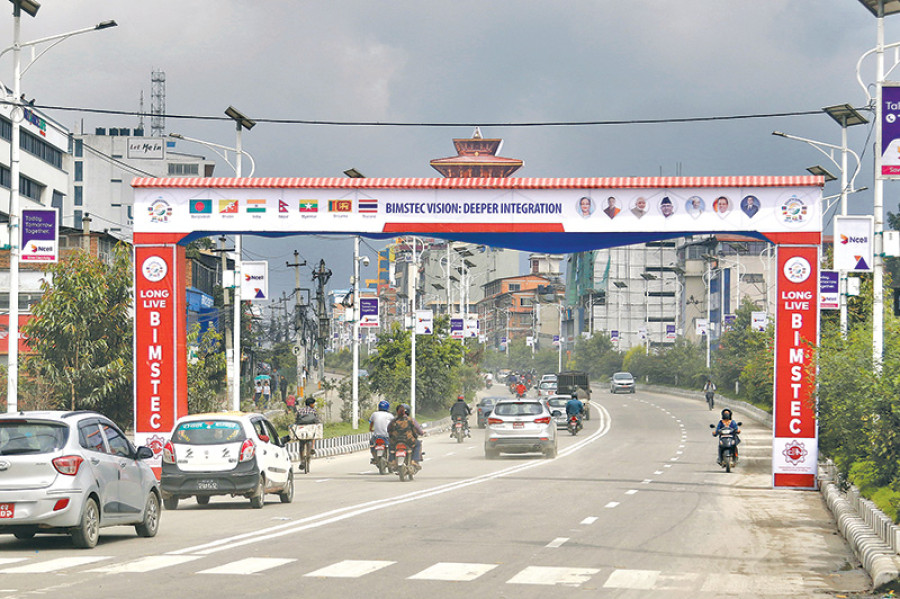
The Bay of Bengal Initiative for Multi-Sectorial Technical and Economic Cooperation (BIMSTEC) came into being in June 1997 with the aim of promoting free trade within the region, increasing cross-border investment, tourism and people-to-people contact and boosting technical cooperation. The group of seven countries—Bangladesh, Bhutan, India, Nepal, Sri Lanka, Thailand and Myanmar—has a combined GDP exceeding $3 trillion and is one of the fastest growing economies in the world. The region is home to 1.7 billion people.
Thailand’s motive for forming the sub-regional group is to become an advanced industrial country by the mid-21st century by collaborating with resourceful Myanmar and accessing the South Asian market under India’s Look West policy. For India, its aim is to get closer with the Association of Southeast Asian Nations (ASEAN) market via Thailand and Myanmar, developing land and maritime connectivity and leading the South Asian Group under its Act East policy.
Nepal and BIMSTEC
Nepal had decided to become a member of BIMSTEC in December 1997, six months after it was established. This scribe, then the chargé d’affaires at the Nepal Embassy in Bangkok, had explored the possibility of Nepal joining the group. Due to the reservation of one member and a five-year moratorium on new membership, Nepal was given observer status before becoming a full member in 2004.
Nepal is the lead country responsible for the Poverty Alleviation sector among BIMSTEC’s 14 areas of cooperation. Under Nepal’s initiative, a Poverty Plan of Action was adopted by the second BIMSTEC Poverty Alleviation Ministers Meeting known as the Kathmandu Statement on Poverty Alleviation 2012, a milestone in the effort to overcome the scourge of poverty and become a poverty-free region by 2030. Nepal has just ratified the BIMSTEC Convention on Combating International Terrorism, Organised Crimes and Illicit Drug Trafficking. The 14 areas of cooperation cover almost all socio-economic sectors. Following the Goa BRICS-BIMSTEC outreach summit in October 2016, two new sectors—Mountain Economy and Blue Economy—were added and Nepal and Bangladesh were entrusted to work on the concepts respectively.
There is a strong possibility of three new members—Laos, Cambodia and Vietnam—joining the group to ensure balanced membership from South and Southeast Asia. There should be no problem in welcoming aspirant countries like China as an observer in BIMSTEC as India and China are already in the Shanghai Cooperation Organisation (SCO), Brazil, Russia, India, China (BRICS) and ASEAN as dialogue and strategic partners. However, other potential candidates for membership or dialogue partners in BIMSTEC may be considered only after the group is consolidated and some gains from integration become visible.
The underlying merit of BIMSTEC is that there are issue-free relations among the members. Unlike the South Asian Association for Regional Cooperation (SAARC), BIMSTEC has no charter, visionary guideline and documented functional methodology. SAARC has not been able to hold its summit meetings due to two provisions in its charter which say that bilateral issues cannot be discussed at the forum and that all decisions have to be unanimous. In contrast, BIMSTEC enjoys a great amount of flexibility in its functioning as it has no charter. However, this state may not last when its efficacy and dimensions expand. Nepal, being the current chair, has rightly taken the initiative to develop a charter and strengthen its secretariat.
BIMSTEC’s slow progress despite having been around for two decades has been attributed to many factors, one of them being the absence of strong leadership. India, the largest member, has often been criticised for not providing strong leadership to BIMSTEC. India was reluctant to take leadership of the group because it is already integrated with the Southeast Asian market through ASEAN. ASEAN has welcomed India’s Act East policy and the value of their trade reached $71 billion in 2016-17, almost equal to the value of India-China trade. Thailand and Myanmar are not paying much attention to BIMSTEC in favour of ASEAN. Thailand’s interest in providing leadership dropped sharply when it failed to house the BIMSTEC Secretariat in Bangkok.
Some critical points
India’s interest in BIMSTEC rose after 2016 because of the postponement of the SAARC summit slated to be held in Pakistan. The Goa BRICS-BIMSTEC outreach summit was held at India’s initiative to prove that BIMSTEC is an alternative to SAARC. India’s interest in BIMSTEC also depends on its political relations with the four South Asian members of BIMSTEC (Bangladesh, Bhutan, Nepal and Sri Lanka) because bilateral differences invariably play a role in the country’s attitude towards regional groupings.
India considers that the success of BIMSTEC and BBIN (Bangladesh, Bhutan, India, Nepal) will give the members an alternative to China’s Belt and Road Initiative (BRI). Bangladesh is positive about BIMSTEC’s prospects because the secretariat is housed in Dhaka and its exports to ASEAN have grown two-fold recently. The world’s centre of gravity is shifting towards Indo-Pacific thereby changing the region’s security dynamics. Any balancing act in the regional security of Indo-Pacific will have a bearing impact on regional groupings like ASEAN, BIMSTEC and SAARC.
- Shah is a former ambassador of Nepal to Brazil.




 21.12°C Kathmandu
21.12°C Kathmandu
